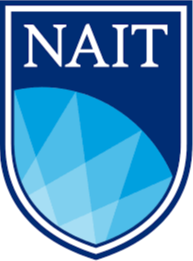Fall 2025: Additive Manufacturing
Main contact
Timeline
-
April 1, 2026Experience start
-
June 2, 2026Experience end
Total pay is US$500.00 per learner.
Companies must complete verification in order to match with experience.
Experience scope
Categories
Mechanical engineeringSkills
cad programs topology optimization additive manufacturing (3d printing) fusion 360 (cad software) solidworks (cad) collaborative communications teamworkA 20-hour project-based internship experience for adult and community college learners interested in exploring careers in additive manufacturing. Approved projects will be matched with up to 5 participants, contributing a combined total of up to 100 hours of meaningful, real-world work. Projects will begin on the program start date and must be completed over a 4-week period.
This experience is designed for university and community college students with emerging or foundational knowledge of additive manufacturing technologies and systems. The goal is to provide learners with practical exposure to real-world manufacturing processes, systems thinking, CAD tools, and additive manufacturing technologies while strengthening both technical and project execution skills.
Learner Goals and Capabilities
Learners will have opportunities to:
- Apply knowledge of additive manufacturing (AM) processes across the seven AM technology families (e.g., material extrusion, vat photopolymerization, powder bed fusion, binder jetting, direct energy deposition).
- Use design-for-additive-manufacturing (DfAM) principles to redesign parts and optimize performance.
- Practice CAD modeling and simulation using tools such as Fusion 360, SolidWorks, or nTopology.
- Evaluate materials (metals, polymers, ceramics, composites) and compare benefits and trade-offs for specific applications.
- Apply topology optimization and lattice structure design to minimize weight and reduce material use.
- Demonstrate project management skills including scoping, deliverable tracking, and structured collaboration.
- Strengthen teamwork, communication, and professional skills for industrial environments.
Learners
Learners will provide tangible outputs that connect academic knowledge with real-world manufacturing applications. Deliverables may include:
- CAD models and design optimization proposals.
- Research briefs or technical reports comparing processes, feedstocks, or performance outcomes.
- Simulation results (e.g., stress analysis, topology optimization).
- Manufacturing process selection guides or feasibility reports.
- Final project documentation including project scope, methodology, and lessons learned.
Companies will gain fresh perspectives, early-stage research, and entry-level technical assets that support business goals or product development initiatives.
Project timeline
-
April 1, 2026Experience start
-
June 2, 2026Experience end
Project examples
Sample Project Ideas
DfAM Redesign Proposal
- Select an existing mechanical part from your operations.
- Redesign the part for optimization using additive manufacturing principles (e.g., weight reduction, fewer assemblies, improved performance).
- Deliverables: CAD redesign files, comparison report (traditional vs. AM design), and recommendations for implementation.
Material and Process Comparison Report
- Evaluate at least two AM materials (e.g., polymer vs. metal feedstocks) and AM processes (e.g., powder bed fusion vs. material extrusion).
- Assess trade-offs in cost, durability, surface finish, and suitability for the application.
- Deliverables: Research brief, cost-performance matrix, and a recommended AM process-material pairing.
Topology Optimization & Lattice Study
- Use CAD and simulation tools to perform a topology optimization on an industrial component.
- Explore how lattice structures or generative design can reduce weight while maintaining strength.
- Deliverables: CAD files of optimized designs, simulation results, and technical documentation summarizing efficiency gains.
Additional company criteria
Companies must answer the following questions to submit a match request to this experience:
-
Q1 - Checkbox
-
Q2 - Checkbox
-
Q3 - Checkbox
-
Q4 - Text long
Main contact
Timeline
-
April 1, 2026Experience start
-
June 2, 2026Experience end
